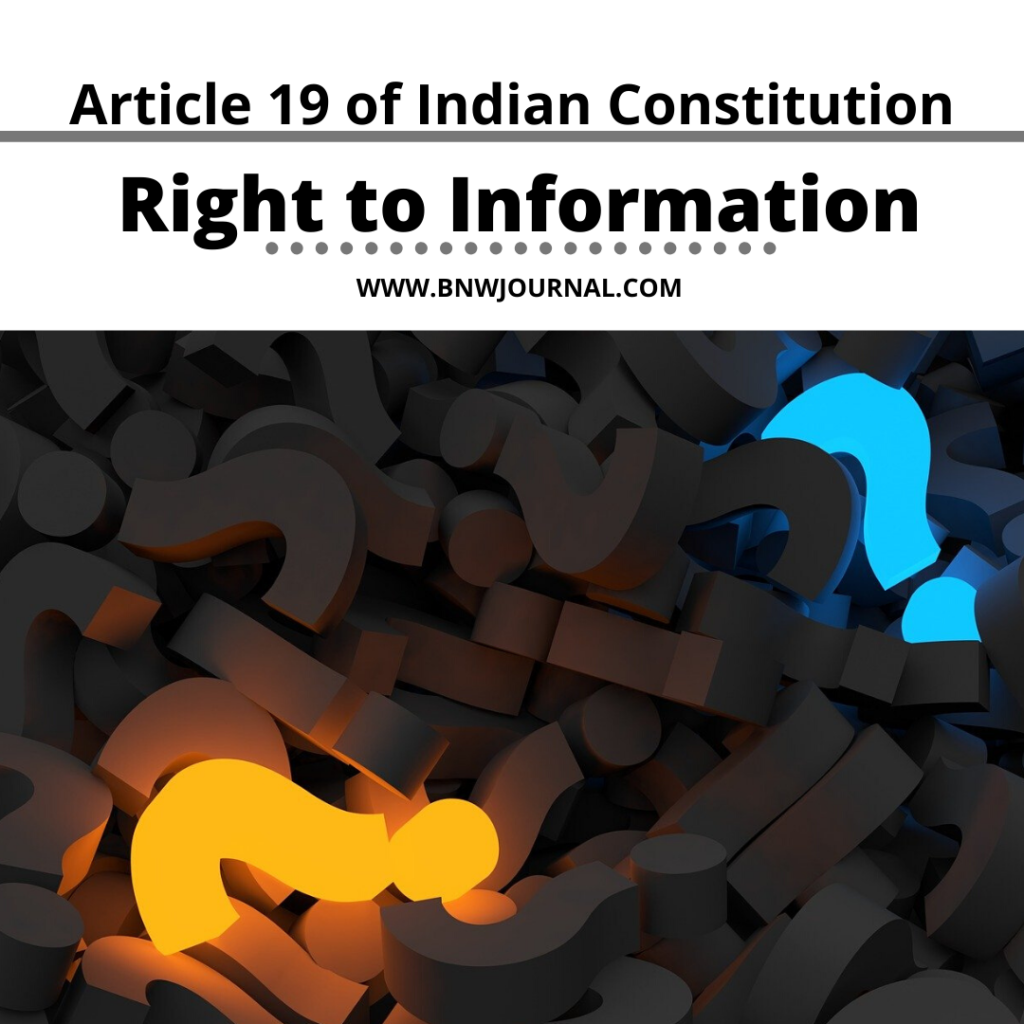![]()
Right to Information in India came into existence as the Right to Information (RTI) Act, 2005, which was a step for the furtherance of the development of the Indian Society. It is one of the flamboyant aspects of a flourishing democratic country. The RTI Act also works as a growth in human rights and liberties in the ever-changing democratic credentials of the country.

Our independence was a long and hard-fought battle and it was the result of the sacrifices of the freedom fighters. The citizens of India had high hopes from the new setup. The Constitution of India was enacted as the protector of rights for the citizens. It contains the fundamental rights and the directive principles of State policy.
The Constitution of India does not normally explain a right to information. The Supreme Court declares in many of its landmark judgments that right to information is implicit in constitution’s Article 21. That is, the Right to life in support of the Constitutional remedies provides under Article 32. And through this article a person can approach the apex court in violation of their rights. The legal position of Right to Information has developed over the years through Supreme Court decisions.
History of Right to information
In the year 1993, the Consumer Education and Research Council drafted the first RTI Law. Justice P.B Sawant with the Press Council Of India presented the draft model law on the Right to Information to the government of India.
The first legislation in India for RTI was the ‘Freedom of Information Act, 2002’. This legislature enabled a citizen of India to secure information related to departments under the public sectors. However, the legislature failed as it died in the womb. This is because the requirement of infrastructure to make it operational was not present at that time. This legislation was repealed. And furthermore replaced by “The Right to Information Bill, 2005”. Lok Sabha, on 23.12.2004, got its introduction. The NCPRI spearheaded the whole phase. This was also a time where many other countries were also passing transparency laws.
From 2005 to the present time, consolidation of the act, and the proper implementation of the act has been a challenge. Said “public authorities” made efforts to safeguard the Act from altercations. To make the RTI Act more able and working, participation and impact is a matter which is gaining rapid importance.
Right To Information and Right to Privacy
Right to Information has some limitations regarding the Right to Privacy. The section 8(1)(j) of the Act clearly defines that personal information disclosure of which has no relationship to any public activity or interest, or which would cause unwarranted invasion of the privacy of the individual unless the Central or State Public Information Officer or the appellate authority, as the case may be, is satisfied that the larger interest justifies the disclosure of such information; provided that the information which cannot be denied to the Parliament or a State Legislature shall not be denied to any person. The information which is personal and does not relate to any public information shall remain private. RTI cannot invade that privacy.
Time Limit for disclosing information
Section 4(1) of the Act says that a time limit of 120 days for certain information is enough at the level of the public authority. These are general information. For example, the board information about the functioning of an organization.



0 Comments